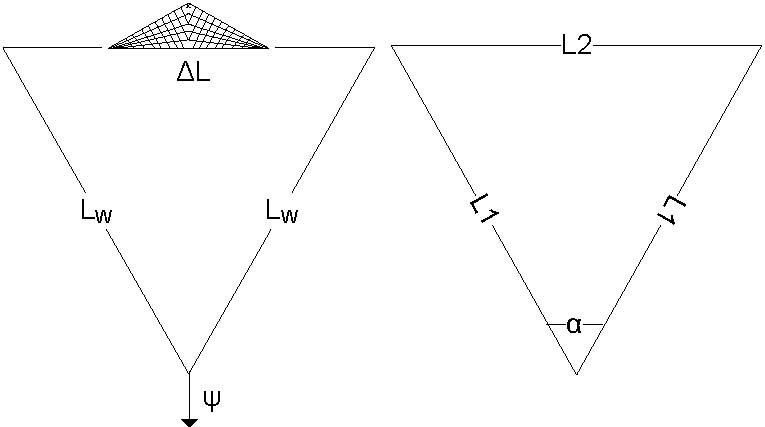|
Marine systems simulation
|
|
Marine systems simulation
|
Class modelling the operation of danish seining.
 Collaboration diagram for Seine operation:
Collaboration diagram for Seine operation:This class controls the operation of danish seining, by giving control input to the vessel, as well as controlling the CSeineConnector object, which is the buoy used in the operation. It controls the warp lengths, if the buoy is set and in which position, the speed of the vessel, and the desired heading of the vessel. Its input parameters define the operation.

The image shows how the trajectory of the vessel is defined. Basically, the total length of the trajectory, \(L\), is found as
\[L = L1 + L2 + L1\]
, where L1 and L2 are the sides of the equilateral triangle that forms the path of the vessel.
Further we have that:
\[ L = L_1 + L_2 + L_1 \]
\[ L = 2L_W + \Delta L \]
\[ 2 sin \frac{\alpha}{2} = \frac{\frac{L_2}{2}}{L_1} \]
Combining these equations, we get:
\[ L_2 = \frac{L}{1+\frac{1}{2 sin \frac{\alpha}{2}}} \]
\[ L_1 = \frac{L_2}{4 sin \frac{\alpha}{2}} = \frac{L - L_2}{2}\]
Using these equations, the trajectory of the vessel is found based on the input ( \( L_W, \Delta L, \psi, \alpha \) ).
The calculations of vessel heading are trivial and not explained in detail, but the headings are found based on the specified final heading and spread angle.
This SimObject is referred to as Seine/Operation